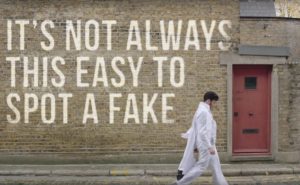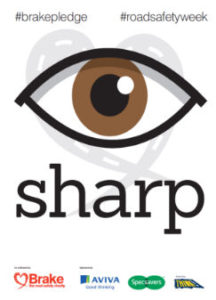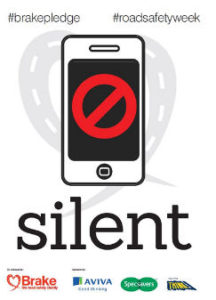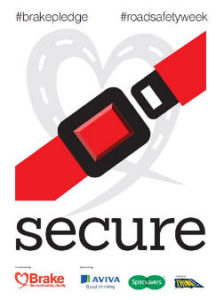News
Think before you drink and cook this Christmas
 Cooking is the number one cause of fire in the home; but if you’re drinking alcohol and cooking it can be a recipe for disaster.
Cooking is the number one cause of fire in the home; but if you’re drinking alcohol and cooking it can be a recipe for disaster.
Rochester Crew Manager, Graham Porter, explained: “If you’ve been for a celebratory night out or enjoyed a drink at home and feel peckish, please don’t put the cooker on. It could result in you losing your home, precious belongings and even your life.
“A far safer option is to leave yourself a pre-prepared cold snack, or get a takeaway, that way you won’t be tempted to put the cooker on and put your safety at risk.” (more…)
Sustainable
Everyone – I’ll minimise the amount I drive, or not drive at all. I’ll get about by walking, cycling or public transport as much as I can, for road safety, the environment and my health.
#brakepledge
#roadsafetyweek
Why go eco?
By choosing sustainable travel, we can all help to reduce the road safety, public health, environmental and economic costs to society of our over-reliance on cars. Fewer cars on the road mean fewer road deaths and injuries, less congestion, less emissions and more pleasant, sociable communities.
Whether it’s doing the school run on foot or bike, walking to the local shop instead of driving to the supermarket, or taking public transport to work instead of driving, incorporating active and sustainable travel into your routine can be really simple, and it’s a great way to stay active, save money, and do your bit for the environment.
Do you need to drive?
Two-thirds (64%) of all UK journeys and 40% of journeys less than two miles are made by car, many of which could be made on foot or bike, or by public transport. While each trip may not seem like much, it all adds up to a lot of unnecessary car use.
For each journey you make by car, ask yourself if there’s a more sustainable and healthy option. If it’s a short journey, could you walk or cycle? You can use Sustrans’ website to explore walking and cycling routes in your area and work out the safest, most pleasant way to get to your destination on foot or bike. Get into the habit of leaving the car at home for these shorter journeys and you’ll spend less money on petrol and feel healthier for the exercise – plus you’ll be helping to make your area a nicer, less polluted place.
For longer journeys could you take a bus, train or coach instead? If you book in advance, the cost of tickets can often work out cheaper than what you’d spend on petrol and you can sit back and relax without the stress of driving. You can look up public transport options by region at www.traveline.info/.
Commuting
If you drive to and from work, there’s a good chance you’ll be able to switch to a sustainable commute, which may be quicker, cheaper, healthier and less stressful. Research shows that people who commute by walking and cycling better able to concentrate and are less stressed. Look online at your local travel information to see what sustainable transport options you have, including bus routes, train services and safe cycle paths.
If you want to cycle to work but don’t own a bike, find out if your employer participates in the government’s Cycle to Work initiative, which allows you to purchase a new bike (and related equipment like cycle paths) tax-free, and pay monthly straight from your salary. If they aren’t signed up to the scheme, direct a relevant member of staff to details of the benefits to employers and encourage them to sign up. Read Brake’s advice on cycling.
Safe cycling

Cycling is healthy, low-cost and environmentally friendly way to travel. Go to Brake’s cycling advice pages for further information on how to keep safe while cycling.
If you have to drive
If there are journeys that you have to make by car, there are some simple steps you can take to minimise the negative impacts of this on you and the people around you:
- Make the Brake Pledge, a simple six point pledge to help keep you and others safe on the road and prevent needless tragedies.
- Keep to a lower speed and avoid harsh braking and acceleration to produce fewer emissions and improve fuel efficiency. In particular, slow down to 20mph or below in built up areas, even where the speed limit is 30. It’s unlikely to affect your journey time significantly, but it will mean your car is less polluting because there is less speeding up and slowing down, and it will mean you’re helping to make roads safer for people on foot and bike. See our advice on speed.
- The same principle applies on faster roads. For each 5mph you drive over 60mph, you use 7% more fuel. Slower is not only safer, but it’s better for the environment and will save you money on petrol
- Plan your journeys more efficiently. If you have a number of errands to do or journeys to make, can they be combined into the same trip? Make sure you still allow plenty of time for driving at safe, slow speeds, possible hold-ups, and breaks every two hours.
- Make sure your vehicle is properly maintained. A well maintained vehicle produces fewer emissions and is more fuel efficient. Simple things like keeping your tyres well inflated, cleaning or replacing dirty air and fuel filters, and regularly changing your oil can improve fuel efficiency. Read our advice on vehicle maintenance.
- Read our factsheet on active and sustainable travel
- Back our GO 20 campaign for lower speeds in towns, cities and villages to help protect people on foot and bike
- Pledge to minimise the amount you drive and choose sustainable travel as much as possible
Brake driver advice: sustainable
www.brake.org.uk/schools-communities/make-the-brake-pledge/27-whats-happening/1285-driver-advice-sustainable
SACF November 2016 Meeting
 The Minutes of the South Ashford Community Forum Meeting of 16th November 2016 can be downloaded from this link or from the Minutes and Agendas page on the South Ashford website. The minutes are draft until accepted at the next meeting. Please do let us have any comments on the minutes.
The Minutes of the South Ashford Community Forum Meeting of 16th November 2016 can be downloaded from this link or from the Minutes and Agendas page on the South Ashford website. The minutes are draft until accepted at the next meeting. Please do let us have any comments on the minutes.
How to spot if you’ve bought a fake item
 Inspect the packaging and item carefully
Inspect the packaging and item carefully
Look out for the tell-tale signs of flimsy packaging and substandard printing, such as spelling mistakes or grammatical errors. If you’re questioning the packaging, compare your item to an online image from a trusted, high street retailer.
Look for a legitimate safety certification label
All electrical products will have one or more safety certifications on their label if made by a legitimate manufacturer. If the certification mark is present only on the packaging, but not on the product itself, there’s a good chance the product is fake.
Make sure everything that should be there is there
Fake products may not include supplementary materials such as a manual or a product registration card or even all the parts!
Check the plug
If you’ve purchased your product from a UK retailer, look to see whether the appliance has a three-pin UK plug or charger.
Trust your instinct – you’re probably right
If you are still uncertain about your product for any reason, you’re probably right to be wary. Visit the high street to compare your product to those on sale in store; if your item varies in any way do not use it.
Can you spot the fake?


Using our tips, can you tell which of the two chargers above is genuine, and which is fake? Even with all the correct information, it can be incredibly difficult to tell – 3 in 5 people couldn’t tell the difference.
If you suspect you’ve ended up with a fake despite your best efforts, see below for our advice.
What to do if you’ve bought a fake item
Act immediately
If you have proof your item is fake, contact the supplier immediately stating your case and demand an explanation; if there has been a mistake made, now is their chance to clarify.
Demand a refund – but stay civil and calm
You have the legal right to a refund if you’ve bought something that’s fake. Despite this, it can be difficult if you’ve made the purchase from an unknown source so be sure to pay with PayPal or your credit card, as your purchase will likely be insured.
If the seller refuses to give you a refund
If you are not able to settle the dispute yourself, contact the retailer that manages the marketplace (such as Amazon) as they are able to intervene on your behalf. If they are unable to help, contact the Citizens Advice consumer helpline on 03444 111 444 for advice.
Alert other consumers – provide feedback
If you can, leave feedback to warn future shoppers about the situation and potential problems, but do stick to the facts and make sure any claims are accurate.
Don’t ignore it – report it
If you know your product is fake, report it to Trading Standards so that they can take action against the seller; selling fake products is illegal and puts people’s lives at risk.
Report a problem with a trader or product to Trading Standards by contacting Citizen’s Advice, who will pass the details to your local Trading Standards service:
- Report a problem to Citizens Advice online
https://ssl.datamotion.com/form.aspx?co=3438&frm=citacomplainform&to=flare.fromforms - Call the Citizens Advice consumer service (CACS) helpline on 03454 04 05 06 (Monday to Friday, 9am – 5pm)
www.adviceguide.org.uk/england/consumer_e/consumer_protection_for_the_consumer_e/consumer_citizens_advice_consumer_service_e/if_you_need_more_help.htm - Textphone 18001 03454 04 05 06
#EFSW
#Spotthefake
Sharp
 Drivers – I’ll stay focussed on safe driving. I’ll take regular breaks and never drive if I’m tired, stressed or on medication that affects driving. I’ll get my eyes tested every two years and wear glasses or lenses at the wheel if I need them.
Drivers – I’ll stay focussed on safe driving. I’ll take regular breaks and never drive if I’m tired, stressed or on medication that affects driving. I’ll get my eyes tested every two years and wear glasses or lenses at the wheel if I need them.
Everyone – I’ll look out for friends and loved ones by ensuring they only drive if they’re fit for it, and rest if they’re tired.
#brakepledge
#roadsafetyweek (more…)
Beware of words qualifying an item’s authenticity
Silent
 Drivers – I’ll never take or make calls, read or type when driving. I’ll put communication devices out of reach, and stay focussed on the road.
Drivers – I’ll never take or make calls, read or type when driving. I’ll put communication devices out of reach, and stay focussed on the road.
Everyone – I’ll never chat on the phone to someone else who’s driving.
Brake Driver advice: distractions
#brakepledge
#roadsafetyweek
Drive smart
Driving is one of the most complicated and risky tasks many of us do on a regular basis. It requires our full concentration, and both our hands, to drive safely.
If you think you can multi-task at the wheel, you’re kidding yourself and putting people in danger. If you use a mobile phone, eat, fiddle with a stereo, do your make up, or do anything else that takes your eyes and mind off the road or your hands off the wheel, you’re significantly increasing your chances of being involved in a crash. (more…)
Secure
 Drivers – I’ll make sure everyone in my vehicle is belted up on every journey, and kids smaller than 150cm are in a proper child restraint. I’ll choose the safest vehicle I can and ensure it’s maintained.
Drivers – I’ll make sure everyone in my vehicle is belted up on every journey, and kids smaller than 150cm are in a proper child restraint. I’ll choose the safest vehicle I can and ensure it’s maintained.
Everyone – I’ll belt up on every journey, and make sure friends and family do too. (more…)
Know where you’re buying from
 Make sure you know where the supplier is based, a ‘co.uk’ URL doesn’t guarantee the website is UK based. If there is no address supplied, or there is just a PO Box, be wary; many fake electrical goods are manufactured overseas, where they will not be safety tested and are produced as quickly and cheaply as possible.
Make sure you know where the supplier is based, a ‘co.uk’ URL doesn’t guarantee the website is UK based. If there is no address supplied, or there is just a PO Box, be wary; many fake electrical goods are manufactured overseas, where they will not be safety tested and are produced as quickly and cheaply as possible.
#EFSW
#Spotthefake


